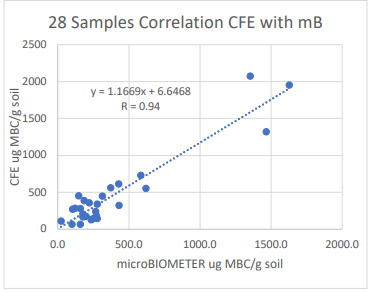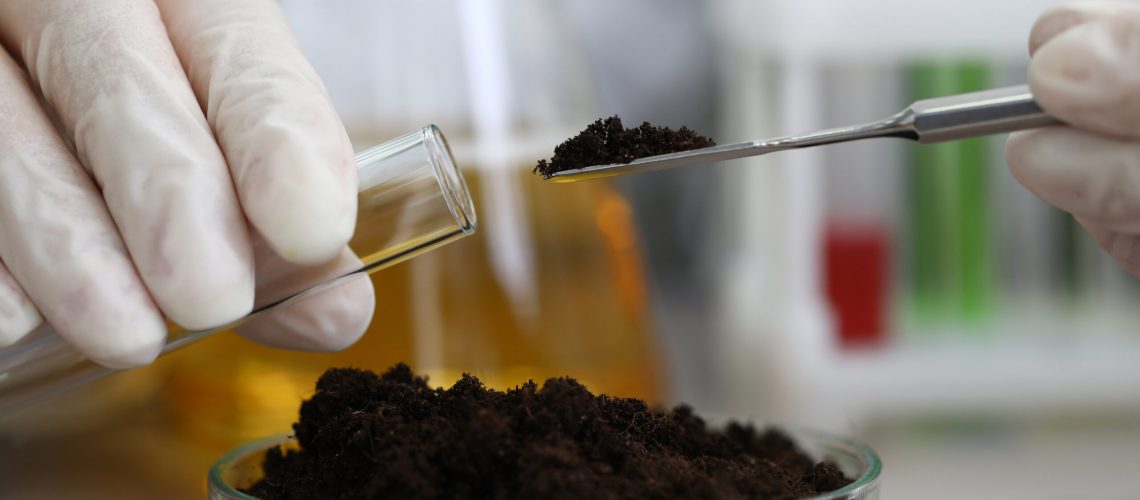
The gold standard of laboratory soil microbial biomass testing is Chloroform Fumigation and Extraction (CFE). The multiple steps, time, and labor involved with CFE require pricing at up to $500 per sample. CFE works by comparing the difference of chemically extractable carbon between two portions of a soil sample: One that has been treated to break open microbial cell membranes and expose the carbon-containing biological molecules to extraction, and one that has not. The difference in carbon for the two portions is reported as microbial biomass carbon (MBC), in units of µg C / g soil.
microBIOMETER® is calibrated to the same units by a different method. Estimates of bacterial dry mass converge at around one trillionth (1×10-12) of a gram (1 pg) for a 1 µm bacterium. We measured the area of microbes in known volumes of microBIOMETER® extract (both by manual counting on a hemocytometer and by digital analysis of micrographs) and calculated total microbial mass, which was then converted to µg / g for the whole 0.5 ml sample of soil in the extract. We found that on average, 0.5 ml of soil weighs 0.6 g when fully dried, independent of starting moisture content. The 1 pg dry mass per bacterium is 50% carbon, so we also had to account for that in our calibration.
Here’s an example of the conversion.
Let’s say that in 1×10-8 liter (10 nl) of microBIOMETER® extract we measured 240 µm2 of microbes. 240 µm2 = 240 bacteria equivalents (BE). 240 BE x 1×10-12 g per BE = 240×10-12 g of dry microbes. The volume of original extract is 10 ml (1 x 10-2 liter), and 10 nl of microscopically examined extract represents 1×10-8/1×10-2 = 1×10-6 of the total mass of the microbes in the extract. So 240×10-12 g microbes / 1×10-6 = 240 x 10-6 g microbes in the whole extract. 50% of the 240 x 10-6 g of microbes is carbon, so we have 120 x 10-6 g microbial carbon. We started with 0.5 ml = 0.6 grams of dried soil in the extraction process, therefore 120 x 10-6 g microbial carbon / 0.6 g soil = 200 x 10-6 g microbial carbon / gram soil, or 200 µg microbial carbon / gram soil.
While we arrived at µg microbial carbon / gram soil through a different method than CFE, it turns out our methods are on par with the CFE test. We compared measurements of µg carbon / gram soil via CFE and microBIOMETER® from 28 soils from across the U.S.
The slope of ~1 of the regression line indicates our units are on par with CFE, and the 94% correlation indicates that users can be confident that the $13.50 or less microBIOMETER® test gives results as accurate and informative as one priced $500.

